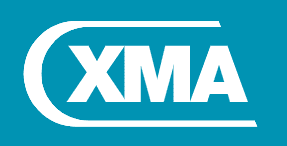How did the Covid-19 lockdown impact sustainability?
The conversation around the shift to remote working is constantly ongoing, and we have all seen first-hand the positive impacts on businesses. This includes anything from improved collaboration and productivity, through to better mental health and wellbeing. Technology has been a key enabler in supporting the move to remote working.
Technology adopted during lockdown to enable employees to work remotely has shaped not just organisations during lockdown, but strategic business planning moving forward. We have already seen announcements from large enterprise technology organisations, shifting their working model to remote, either entirely or in part.
The productivity benefits of working from home centre around the loss of the need to commute. With the average person’s work commute at 60 minutes each way, this has saved on average a staggering 10 hours per week spent mostly in the car, on the train or bus. As a result of this, the European Environment Agency’s data confirms large decreases in air pollutant concentrations, of nitrogen dioxide (NO2) concentrations, largely due to reduced traffic and other activities, especially in major cities under lockdown measures.
Reductions of around half have been seen in some locations, for example:
- In Milan, average concentrations of NO2 for the past month have been at least 24 % lower than the month prior. The average concentration during the week of 16-22 March was 21 % lower than for the same week in 2019.
- In Rome, average NO2 concentrations for the past four weeks were 26-35 % lower than for the same weeks in 2019.
- In Barcelona, average NO2 levels went down by 40 % from one week to the next. Compared with the same week in 2019, the reduction was 55 %.
- In Madrid, average NO2 levels went down by 56 % from one week to the next. Compared with the same week in 2019, the reduction was 41 %.
- In Lisbon, average NO2 levels went down by 40 % from one week to the next. Compared with the same week in 2019, the reduction was 51 %.
(European Environment Agency, 2020).
After achieving and analysing this reduction in pollution, will the Covid-19 lockdown result in real progress to tackle climate change?
Whilst addressing long-term air quality problems requires ambitious policies and forward-looking investments, the Covid-19 lockdown demonstrated the capability we must vastly reduce our emissions. When the noise of airplanes and traffic was gone, it helped us understand and have empathy for the effects of climate change on future generations. The lockdown also demonstrated to employers that employees can effectively work from anywhere with best placed technology, and in turn contribute toward a greener and more sustainable future.
Is your business set up for remote working?
XMA have been supporting businesses throughout Covid-19 to achieve efficient digital workspaces. Get in touch to discuss your Digital Workspace now.
Reference: European Environment Agency (2020). Air Pollution. Available at: https://www.eea.europa.eu/highlights/air-pollution-goes-down-as [Accessed: 24.08.2020]
Doing a little extra with “Little Extras”
With the unveiling of the 2018 budget last week, it was announced that the government would be investing an additional £400m into schools across England and Wales.
This additional investment was described as giving schools the extra budget for “the odd little piece of kit that they need*” – more specifically, “whiteboards and a couple of computers*”. This will be a one off capital payment direct to schools, averaging £10k per primary and £50k per secondary school.
The government have experienced a huge backlash across the country, with Geoff Barton, general secretary of the Association of School and College Leaders, saying “It is a sign of the government’s priorities that it is spending more on fixing potholes than on fixing the school funding crisis.”**
We agree that it is a small investment, and it certainly isn’t enough to help schools stretch to all the necessities they need. However, with our help we can make that additional budget go a lot further than just “a few little extras”. Our experience in doing more with less has supported schools in meeting their goals despite restricted budgets. Innovative technology solutions needn’t cost the earth. They just require careful planning, consideration and future proofing.
We pride ourselves in taking a consultative approach, by taking the time to understand your environment, challenges you currently face, and what your objectives are as a school.
Our specialist Schools team are ready to help you do a little extra with your “little extras”. Get in touch with us today so we can help your budget stretch further.
If you would like a member of our Schools team to contact you to discuss doing a little extra with “Little Extras”, please complete the fields below:
*The Guardian, 2018
** Schools Week, 2018
Choosing the Right Technology: IT procurement Tips for SMEs
A well-considered investment in new technology is an investment in your business’ long-term future.
It’s an exciting time for any organisation. The right tech, whether hardware or software, can transform a firm’s growth potential, helping your business take the next step in its success story. However, it can also be a stressful time as smaller firms don’t necessarily have the kind of in-house IT procurement expertise needed to make important tech investment decisions with confidence.
With so many alternatives on offer, working out the best IT solution for your business isn’t always straightforward – and the implications of getting it wrong can be costly. Here are our thoughts on some of the steps that smart SMEs are taking in order to make sure their technology investment decisions have the desired impact
1. Start at the end
Just like any kind of capital expenditure, the intended benefits of the investment should be well understood before the procurement process starts. The primary reason that SMEs buy new technology is the need to improve performance or optimise a business process, so look at the processes in your business and ask, what should or could be done better, more quickly or more efficiently?
Often the best people to identify these pain points are your workforce. A staff survey can be an effective way to work out how much time is being spent on different activities, which can help to identify and prioritise inefficiencies.
Then you can ask yourself, could technology help to address this?
Are staff spending hours on end in team meetings, for example? Perhaps they need a more effective tool for collaborating, like an Instant Messaging system or a project management app?
Are they taking an age to locate customer files in filing cabinets? In that case, a scanning solution could make that process far more efficient and productive, freeing them up to make an impact elsewhere in the business. A business should only invest once it has clearly identified the processes it needs to change and how new technology can effect that change.
2. Consult and report
So, now you know what you want your new technology to be able to accomplish, it’s essential to consult all the staff who will ultimately be using it about the functions they need.
These are not vague ambitions, but clear objectives that tie in to the needs of the business.
You can also ask them about any other desirable features that would help them do their jobs better.
All these factors should also be ranked according to importance, as budget limitations may not allow you to tick every box, so prioritise the most critical.Some of the issues you will want to consider include usability, security, scalability, functionality, reliability, quality, the provision of support and compatibility with existing systems.
Once your analysis is complete, create a written report that lays out exactly what the investment is designed to achieve, that can be shared with, and signed off by everyone that will be affected. This document will prove invaluable when it comes to navigating through the huge variety of potential solutions that are available.
3. A systematic solution
The huge amount of technology aimed at SMEs can be seen as both a blessing and a curse.
On one hand, it makes it more likely that there is a product out there that precisely suits your circumstances, on the other, finding it could be a real challenge.
Now you have your comprehensive list of requirements, one option is to create a spreadsheet comparing them against a selection of potential solutions.
You can then start narrowing down the list by working out which option fulfils the most criteria to find the best solution.
Of course, cost will be a factor too, but look beyond the initial investment to consider the long-term value, such as the print cost per page provided by a new printer.
If this still seems a little overwhelming, then teaming up with a technology supplier could be the way forward.
4. A helping hand
Don’t think of us just as a supplier with a sharp salesman who’s trying to sell you the most expensive solution they can, regardless of its suitability.
We function more like a trusted procurement partner, who can support you through the decision-making process, installation and bedding in of any new technology.
We want to build a long-term relationship with your business, so it’s in our interest to ensure we provide the right long-term solution for you.
We work hard to understand what businesses need from their technology and develop integrated solutions that enable customers to achieve their goals. And work with you to understand the challenges you face, then introduce services and products that will help you to work smarter and stay ahead of your rivals.
5. Teething troubles and training
Most IT professionals will tell you that, however well planned an installation is, some degree of teething troubles are inevitable.
For small businesses, any period of downtime can have a huge impact, so ready access to technical support and training is essential, especially in the first few months.
Again, we can provide some added value by managing the installation process.
Training ensures that your staff are getting all they can out of a new technology, using it to its full potential and generating the maximum positive impact on productivity, as well as delivering a better Return On Investment (ROI). We can offer training, so you have plenty of options to get the right solution for your business.
Learn how organisations from various sectors are deploying technology to their advantage by visiting our Success in Action page.
Success for XMA as the 2018 CRN Channel awards shortlist is announced
In its 25th year, many will have been anxiously awaiting this years’ shortlist for the CRN Channel Awards 2018. The awards are the perfect opportunity to share acheivements and recognise those who have made outstanding contributions to the channel. XMA are proud to announce our shortlisting at this years awards.
As the current reigning winners of the CRN Public Sector VAR award in 2017, we have continued to deliver value to our public sector customers. As a result, XMA have been named one of the finalists in the running to be named this years winners. Further to this, XMA have also been shortlisted under the ‘Reseller of the Year (£51m+)’ category, a prestigious title for any reseller in the channel.
Ian Cunningham, Director of Sales & Marketing at XMA had this to say on the news of our shortlistings:
“As competition for the CRN Reseller of the Year and Public Sector VAR of the Year awards is so incredibly high, I am delighted XMA have been shortlisted for both awards for the second year in a row. Last year I was incredibly proud to accept the CRN Award for Public Sector VAR of the year on behalf of XMA, particularly in front of an audience of industry peers.”
“XMA is powered by our people and it is them who make these awards possible through their hard work and focus on our customers. They live our values and make a difference.”
The awards ceremony will take place on the 15th November, where we look forward to celebrating success with other industry peers from across the channel.
Does your technology make the grade? 4 reasons why technology is critical to learning
With GCSE results out today and expected to have been the toughest yet with the new grading system, it got us thinking. How essential is technology to the way our students learn?
When I think back to my school days, which actually weren’t too long ago (no, really!), the overhead projector was the latest mod-con to hit the assembly hall and the chalkboard was still the smartest way to share real-time lesson content.
Well, technology has come a long way since those days, yet we still managed back then. Students were still learning, achieving and prospering from their education. So if we were able to nurture success before the technology boom, why is it so important in today’s classroom?
Here are 4 reasons why we believe technology now plays a critical role in learning:
1. Students demand it
Teens spend nearly 9 hours every day consuming media and have grown up immersed in technology, so keeping up with this demand is essential. The innovative adoption of technology can also play a key role in the recruitment of the next student body but IT departments should ensure that core infrastructures and applications have the flexibility to support these changes.
2. Learn at their own pace
Traditional learning could often be fast paced, risking a drop off of concentration and understanding. With the integration of technology in the classroom and learning concepts such as flipped learning, students can learn at their own speed, pause, and recap whenever they need, meaning that the more advanced student can go ahead, freeing up the teacher to provide support 1:1 to those who need it.
3. Enhance Engagement
Feedback from our customers over the years suggests that students learn best being more interactive. This is particularly apparent in STEAM subjects where content is often more complex. Technologies such as 3D print and robotics are leading the way in STEAM by breaking down the learning barriers and offering more practical methods of learning, whilst future-proofing students as they enter the workplace.
4. Enable Collaboration
Technology permits a connected world and in this case, a connected learning environment. With intelligent applications such as Office 365 and G Suite, students and teachers can communicate, collaborate, chat and use the familiar productivity applications in a secure environment.
As experts in education technology, we are close to the market and its trends. Here are a few technologies that are already making a real impact in the classroom:
Chromebooks
Chromebooks are taking over the classroom and the reasons are simple. They are cost effective and affordable, feature an all-day battery life and instant on functionality; and with Chromecast, students and teachers can instantly share their screen.
If you are interested in Chromebook, you should check out our latest offer! You can get a HP Chromebook for as little as £65.00!
3D print
For reasons we’ve previously discussed, 3D printing can play a valuable part in STEAM subjects, transforming the classroom into an interactive learning environment.
iPad
iPad is the ideal computing companion both inside and outside of the classroom. Its portable format, instant load up time and touch screen makes life easy for teachers and students alike. Perfect for internet research, making videos and music, taking lesson notes and sharing and managing content. What’s more, iPad is now much more cost effective and has full integration with cloud platforms such as Google and Microsoft.
So it’s clear, we have come a long way since school days were guided by a text book and piece of chalk. The dawn of the internet revolutionised the way we gained information and technology evolved around us – so much so, that teens today are technology native and would probably rather swap their right kidney than sacrifice their mobile phone.
That said, technology has enabled personalised, engaging and even mobile learning. Its enhanced collaboration and takes traditional subjects such as science, engineering and technology to the next level. Without it, the classroom struggles to thrive which is why building a technology environment that supports these trends is essential.
Is your tech up to the task?
Not sure how to enable cloud managed mobility, whether your network can support the load or how flipped learning can really make a difference? Our specialists have the answers and can help determine whether your existing IT is up to the job.
Ben Brown
Head of Schools





 Monitoring by Hotjar
Monitoring by Hotjar